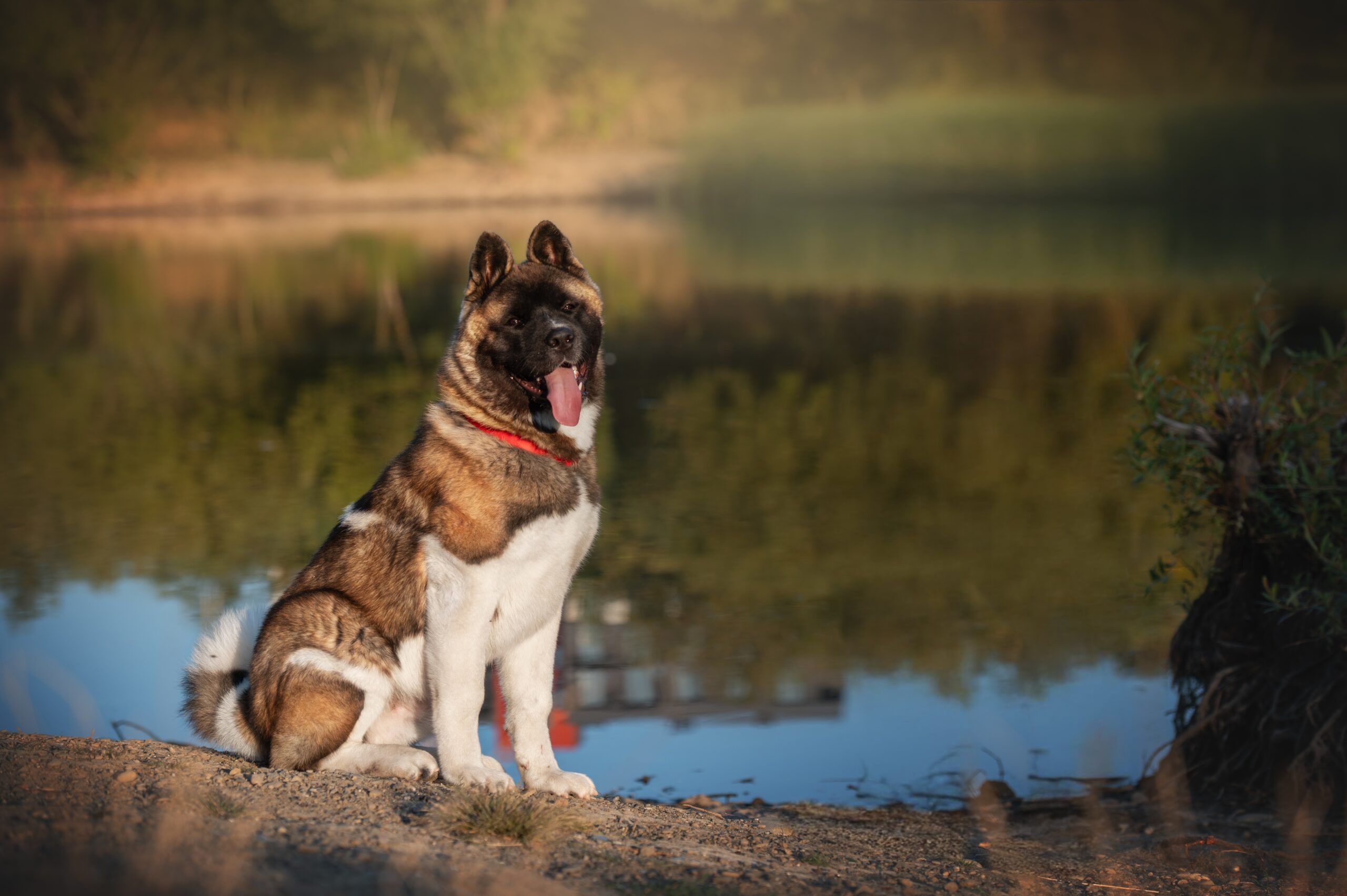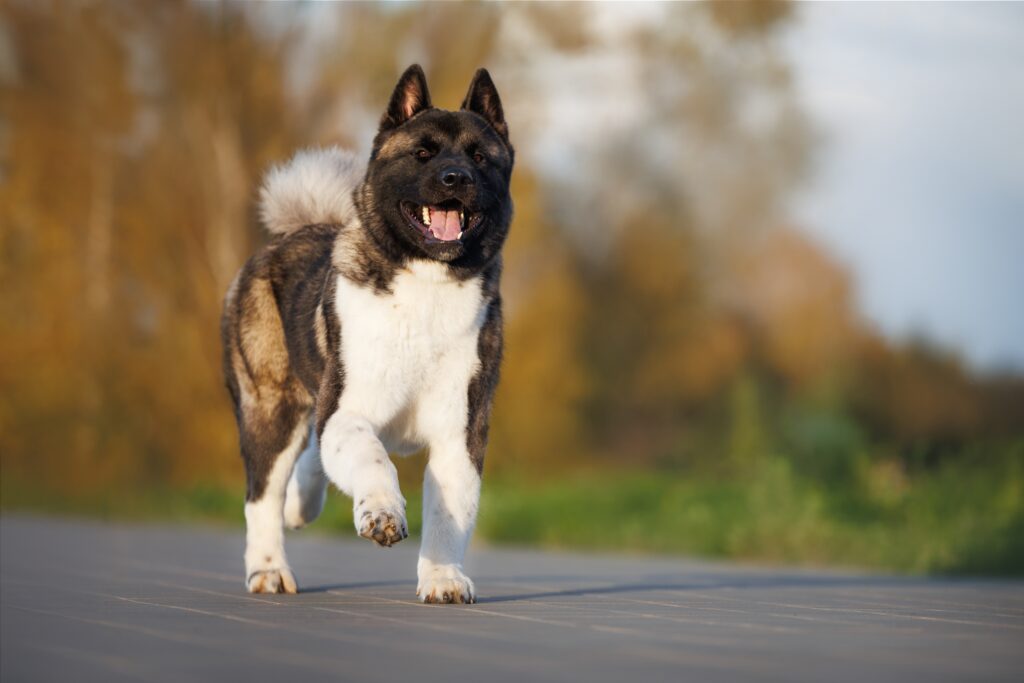
The Akita: Noble, Aloof, and Deeply Loyal
A breed for experienced owners.
The Akita is a striking breed known for its powerful physique, aloof nature, and unwavering loyalty. Originating in Japan and deeply rooted in centuries of tradition, the Akita has long been celebrated as a symbol of protection and honour. While they are not the most demonstrative dogs and often keep their emotions close to the chest, Akitas form unbreakable bonds with their chosen people. This article explores the Akita’s fascinating history, unique temperament, care needs, and the qualities that make it one of the most noble yet misunderstood breeds in the dog world.
Outline
- Introduction
- The History and Symbolism of the Akita
- Akita vs American Akita: What’s the Difference?
- Physical Characteristics
- Personality and Temperament
- Training and Socialisation
- Exercise and Lifestyle Needs
- Grooming and Coat Maintenance
- Health Considerations
- Living with an Akita: Pros and Cons
- Akitas in Popular Culture
- Final Thoughts
Introduction
With its broad head, curled tail, and proud stance, the Akita commands attention. This breed is not one to seek affection from everyone—but those lucky enough to earn an Akita’s trust experience a bond that is deep, protective, and lifelong.
Whether you’re drawn to their majestic looks or intrigued by their loyal nature, the Akita is a breed that deserves respect, understanding, and responsible ownership.
The History and Symbolism of the Akita
The Akita Inu, or Japanese Akita, originates from the mountainous northern regions of Japan, specifically Akita Prefecture.
Key historical points:
- Bred as a hunting dog for wild boar, elk, and even bears
- Revered as a spiritual protector and symbol of good health
- Given as gifts to honour notable figures or to bless newborns with strength
- Once owned exclusively by the Japanese aristocracy
Famous Akita: Hachikō, who waited every day at Shibuya Station for his deceased owner, has become a national symbol of loyalty.
Fun Fact: A statue of Hachikō still stands in Tokyo today.
Akita vs American Akita: What’s the Difference?
There are two distinct types of Akitas today: the Japanese Akita Inu and the American Akita.
| Feature | Japanese Akita Inu | American Akita |
|---|---|---|
| Size | Slightly smaller | Larger, more muscular |
| Head shape | Fox-like | Bear-like |
| Coat colours | Limited (red, white, brindle) | Many (black, pinto, fawn, etc.) |
| Temperament | More reserved | Slightly more outgoing |
| Recognition | Considered separate breeds by some kennel clubs |
Both types are noble, powerful, and loyal—but understanding the differences is helpful when choosing a companion.
Physical Characteristics
The Akita is a large, imposing dog with a well-proportioned, muscular build.
| Attribute | Description |
|---|---|
| Size | 32–50 kg (females), 45–60 kg (males) |
| Height | 60–70 cm at the shoulder |
| Coat | Double-coated: thick, weather-resistant |
| Tail | Large and curled over the back |
| Ears | Small, erect, and forward-facing |
| Eyes | Dark and deeply set |
Despite their size, Akitas move with surprising grace and dignity.
Personality and Temperament
The Akita is often described as:
- Aloof: Not fond of strangers
- Loyal: Bonds deeply with its family
- Dignified: Rarely goofy or overtly affectionate
- Protective: Naturally wary of intruders or unfamiliar people
- Independent: Makes decisions for itself—sometimes stubborn
Noteworthy behaviours:
- Quiet and rarely barks unnecessarily
- Observant—always aware of their surroundings
- Often reserved even around other animals
Important: The Akita is not a breed that thrives in chaotic or overly social households. It values calm, structured environments.

Training and Socialisation
Challenges:
- Strong-willed and highly intelligent
- Can be dominant, especially with inexperienced owners
- Needs consistent, calm, positive reinforcement
- Does not respond well to harsh punishment
Best practices:
- Begin socialisation from puppyhood—introduce people, sounds, and environments
- Keep training sessions short, focused, and consistent
- Work with an experienced trainer, ideally one familiar with guardian breeds
Without proper socialisation, Akitas can become overly wary and territorial.
Exercise and Lifestyle Needs
Although not hyperactive, Akitas require regular exercise to stay healthy and content.
Daily needs:
- 1–2 walks per day
- Off-lead play only in secure, enclosed areas
- Mental stimulation via games, puzzles, or training sessions
Not ideal for: Very small flats or homes without access to outdoor space.
Caution: Akitas are not typically good with other dogs—particularly of the same sex.
Grooming and Coat Maintenance
The Akita’s thick double coat requires moderate upkeep—with seasonal shedding being the main challenge.
Grooming essentials:
- Weekly brushing to remove loose hair
- Daily brushing during heavy shedding seasons (spring and autumn)
- Occasional baths (every 1–2 months)
- Routine nail trimming and ear cleaning
Top tip: Use an undercoat rake or slicker brush to manage seasonal moults effectively.
Health Considerations
Akitas are generally healthy but prone to a few hereditary and breed-specific conditions.
| Common Conditions | Description |
|---|---|
| Hip dysplasia | Malformation of the hip joint |
| Hypothyroidism | Can lead to lethargy and weight gain |
| Autoimmune diseases | Such as pemphigus or VKH syndrome |
| Progressive Retinal Atrophy (PRA) | Degeneration of the retina, causing blindness |
| Bloat (gastric torsion) | A life-threatening emergency—learn the symptoms |
Lifespan: 10–13 years with proper care.
Always choose reputable breeders who screen for health conditions.
Living with an Akita: Pros and Cons
Pros:
- Deeply loyal to its family
- Clean, odourless coat
- Calm and quiet indoors
- Excellent watchdog without excessive barking
- Doesn’t require endless exercise
Cons:
- Aloof or even hostile to unfamiliar dogs
- Not suitable for off-lead walks in public
- Can be dominant or aggressive if improperly raised
- Heavy seasonal shedding
- Not a “social butterfly” breed
Best suited for experienced dog owners who appreciate structure, loyalty, and dignity.
Akitas in Popular Culture
The most famous Akita in the world is undoubtedly Hachikō, whose loyalty became legend:
- Waited at a train station every day for nine years after his owner passed away
- Immortalised in statues, books, and the 2009 film Hachi: A Dog’s Tale, starring Richard Gere
- Symbol of faithfulness and devotion in Japan
Other appearances:
- The Akita has also appeared in anime, advertisements, and even royal households—Helen Keller was gifted the first Akita brought to the USA.
Final Thoughts
Akitas are not for everyone—but for those who understand their unique nature, they offer a profound companionship that few other breeds can match. They don’t seek constant attention or praise, but they will protect, love, and stay loyal to their families for life.
In summary: If you value quiet strength, deep loyalty, and noble independence, the Akita may be your perfect match—just be ready to earn their respect first.